Now that my Amiga 3000 has been fully restored, I decided to make it the best Amiga I could. Here is the journey I took.
Acceleration
One of the first upgrades, I decided on, was to make my Amiga one of the fastest possible for the era. I could have gone the PPC route for this, but these upgrades are quite rare and are expensive today. This leaves something in the 680×0 range of CPUs, and the last generation of the Motorola range was the 68060.
The 68060 came in several variants and revisions. The full version, just called a 68060, has an FPU (Floating-Point Maths Unit) and MMU (Memory Management Unit). Then there is 68LC060, the LC standing for Low Cost, this does not have the FPU. Finally, there is the 68EC060, in this case the EC means Embedded Controller. The EC has no MMU or FPU.
The best price/performance I found for a full 68060 was a revision 5 50MHz version. There is a revision 6 that came out later on a smaller fabrication process. These can be overclocked to much higher speeds, but they are also highly sought after today and are therefore very expensive.
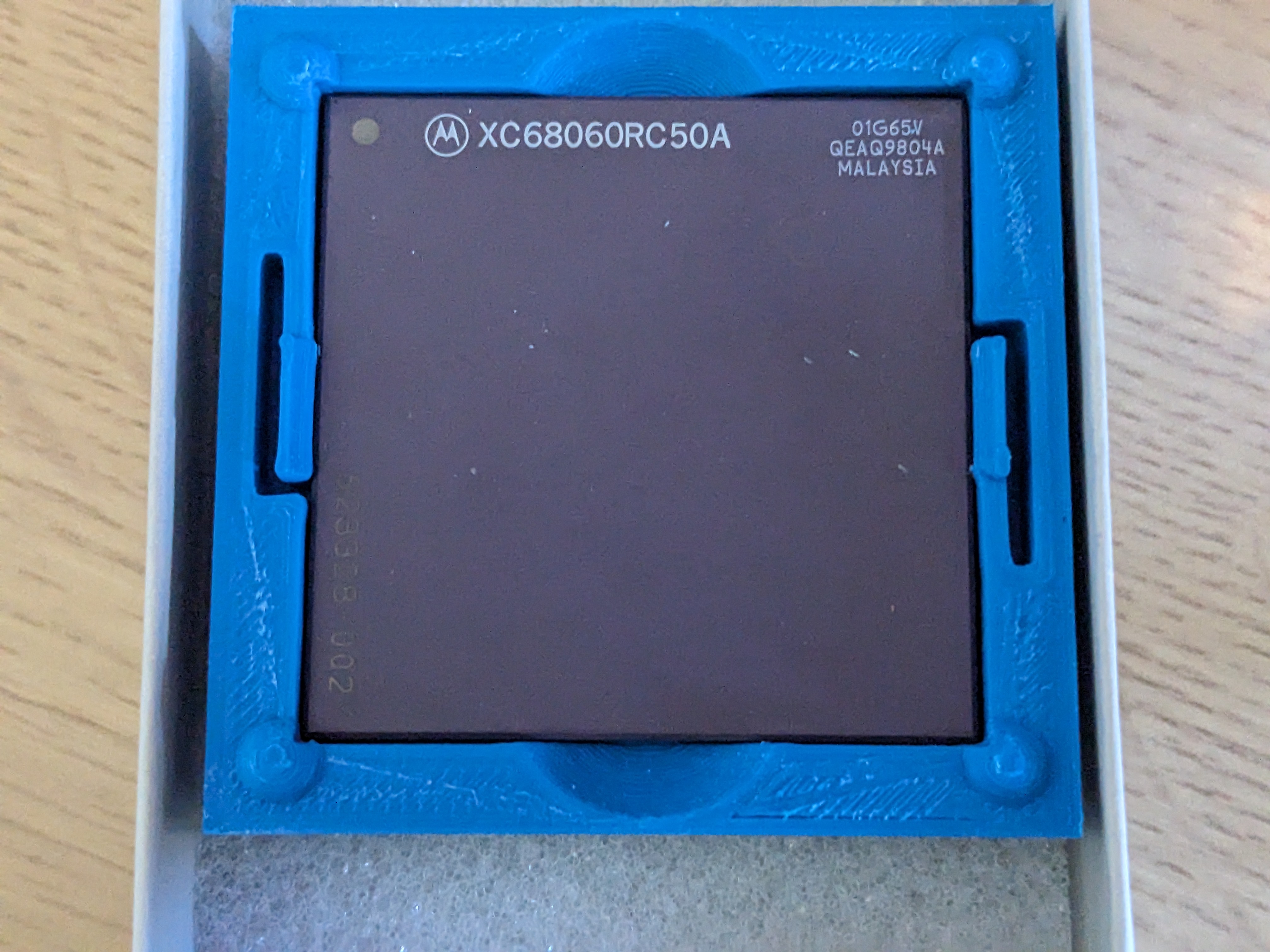
You’ll notice this chip starts with “XC” instead of the normal “MC”. The “XC” were the “not fully qualified” parts, sort-of pre-releases of the CPU. There appears to be a lot of these around for the 68060, I’m not certain why.
Of course, now I have a CPU, I need something to put it in. There are a couple of boards to choose from, but I went with the BFG9060. This is a board for the Amiga 3000 and 4000 which takes a 68060 or 68040 and also adds 128MB of Fast RAM.
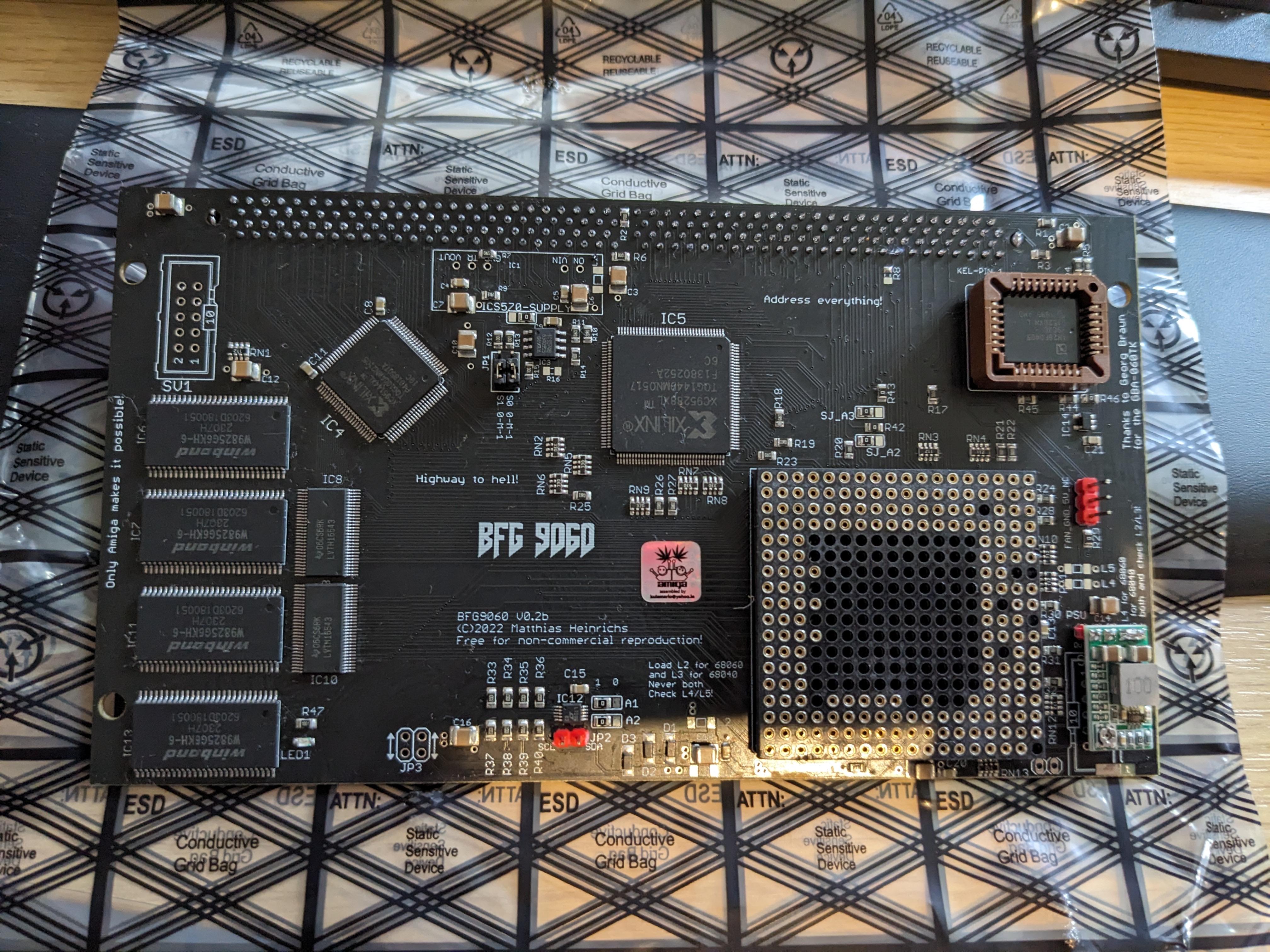
The CPU just pops onto the board (checking the orientation is correct) and then the board itself fits onto the CPU slot inside the Amiga.
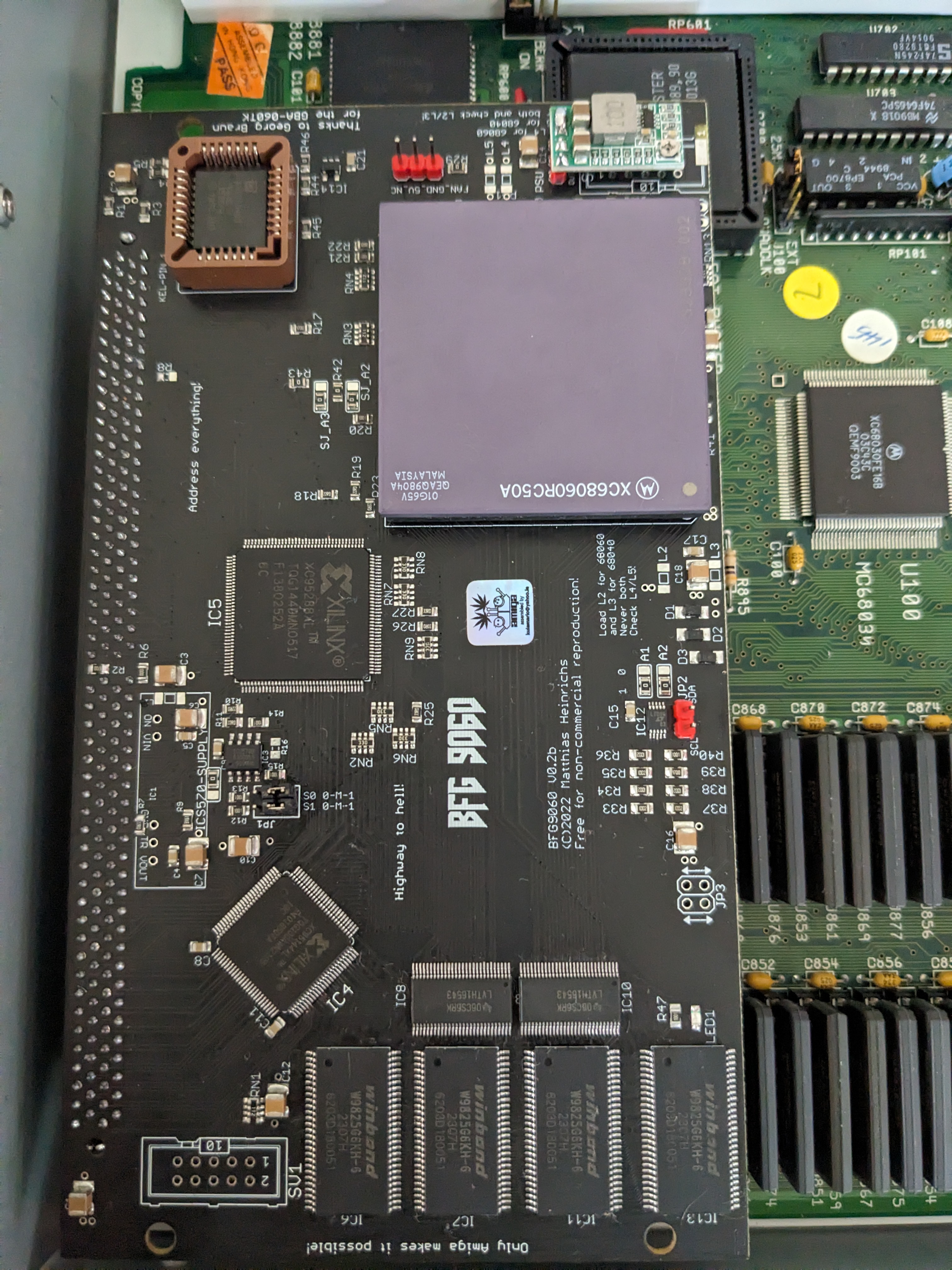
I will add some cooling to this later, but it should run fine at 50MHz without it. My Amiga 3000 already has the jumpers set for 25MHz, which is precisely where it needs to be for this board to operate.
SysInfo shows an 8x performance improvement over the 25MHz 68030 that the Amiga 3000 normally has. Using Amiga Test Kit we can validate that all the RAM is present.
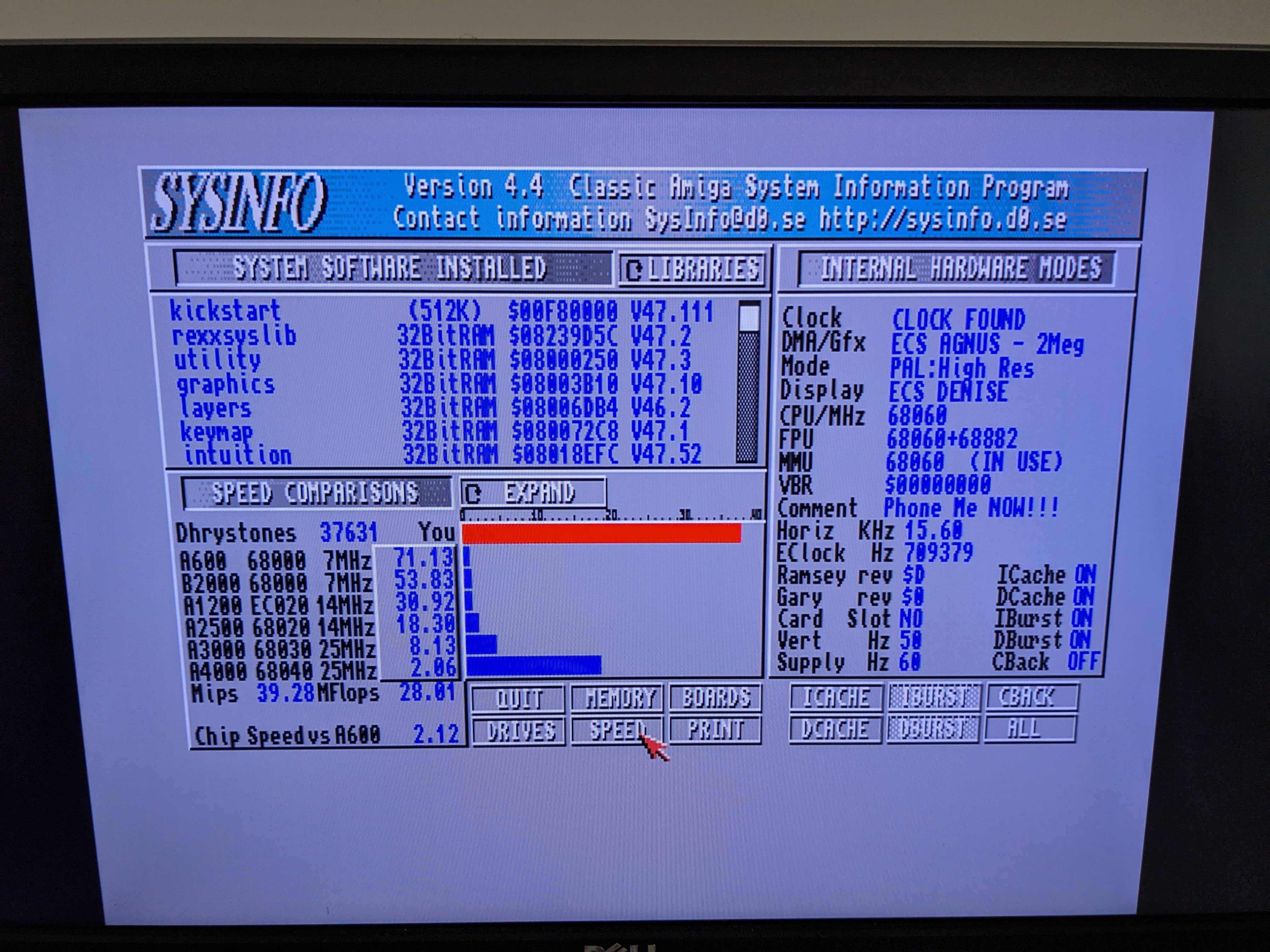

There is, however, a downside. Some Amiga 3000s have an instability issue with the onboard SCSI when using BFG9060s, unfortunately mine is affected by this. A solution is needed. EDIT 2023-08-01: It turns out I was wrong.
RTG
For Amigas, RTG stands for ReTargetable Graphics. This is a graphics card that can be used by Workbench and some games to provide an accelerated high-resolution (for the time) display. It runs separately from the OCS/ECS/AGA graphics the Amiga normally outputs, and the output is normally separate from the onboard video.
There are many makes and models of RTG cards that could be used, I ended up going for a Picasso 2+ card.

The main processor of this is a Cirrus Logic chip found on many PC VGA cards at the time, there is 2MB of RAM onboard and also a Pablo board which provides composite and s-video outputs. One feature it has, and this was a requirement for me, is a video pass-through. Anyone who has used an old school Voodoo graphics card will be familiar with this, the main video card connects to this and is passed through the card until such a time as the card is enabled. Then the output of the card is itself.
The card makes a satisfying relay click when it switches between the onboard video and the card itself. Anyone who had an Orchid Righteous Voodoo card will know exactly what I mean by this.
The wire with black connectors below is a short VGA cable used for the pass-through from the Amiga’s built-in scandoubler to the RTG card. The blue connector is the video out.
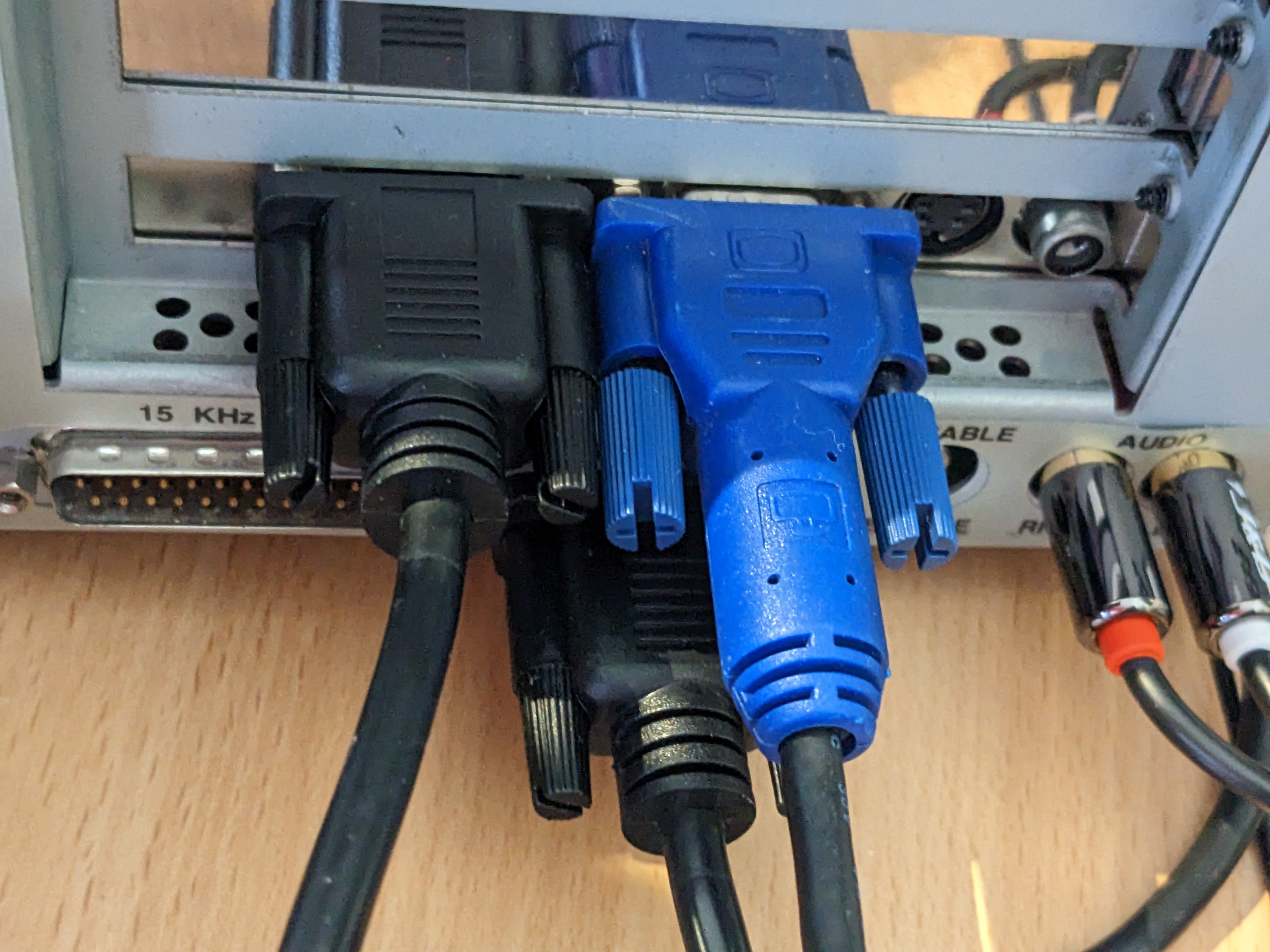
There is some software that needs to be installed to make the card work, called Picasso96. The older version of this is freely available, which is what I used, but it is still being developed today. Once installed, I set the resolution to 640×480 (it can go much higher) and got a nice crisp Workbench display back, which would not be capable with the onboard ECS chip.
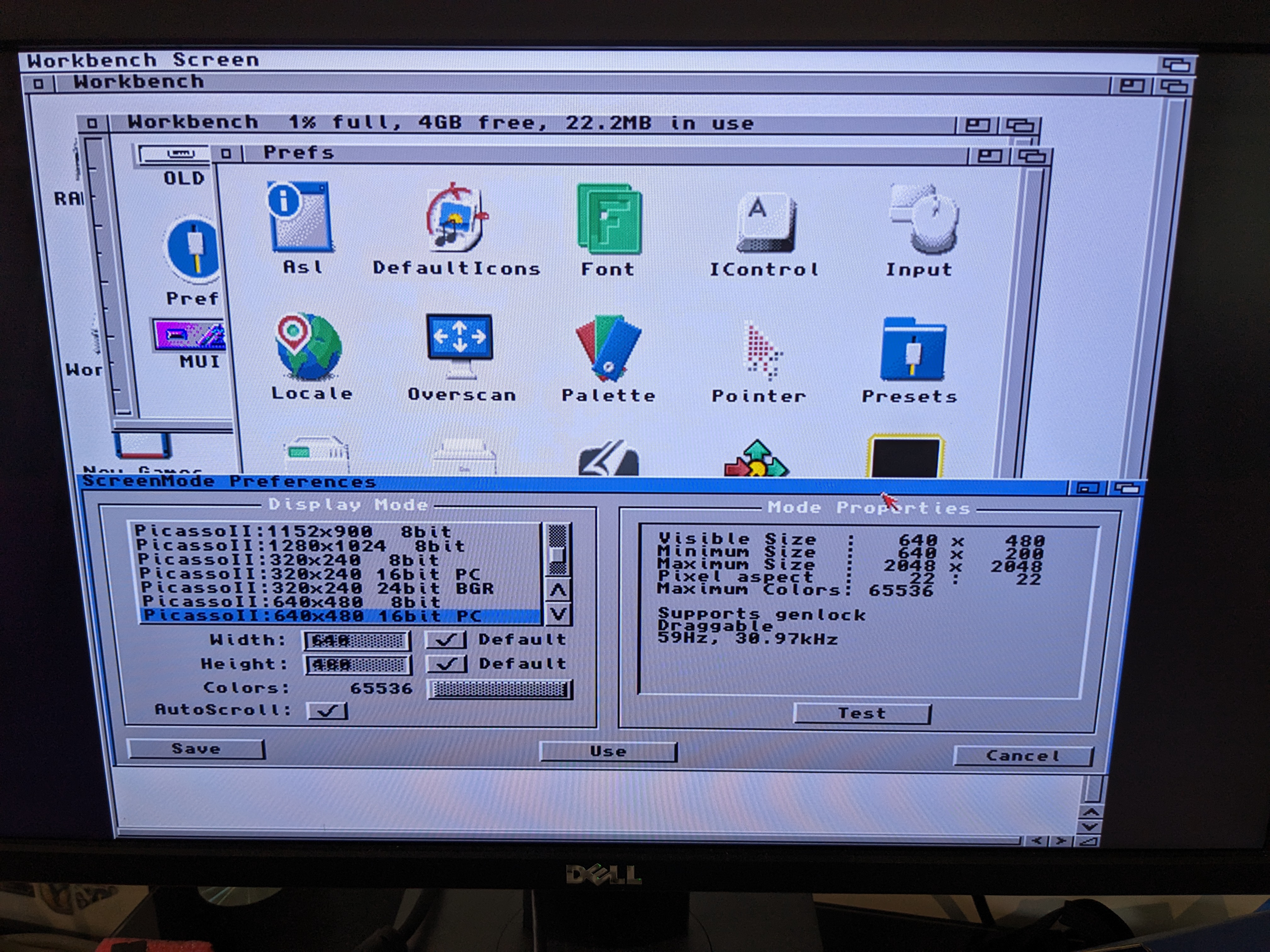
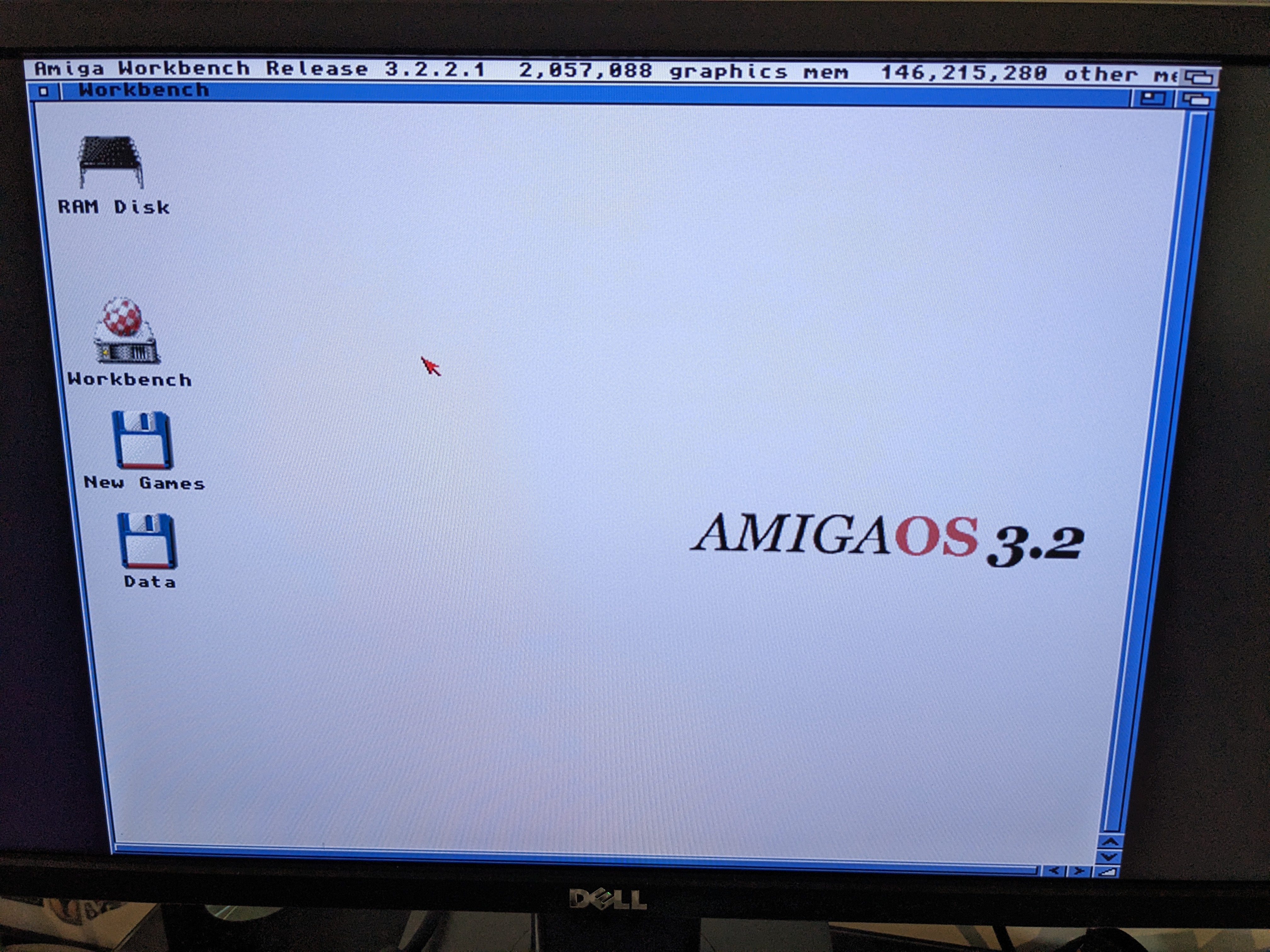
This also means that some more modern (for the time) games can be played on the machine. How about Rise of the Triad?

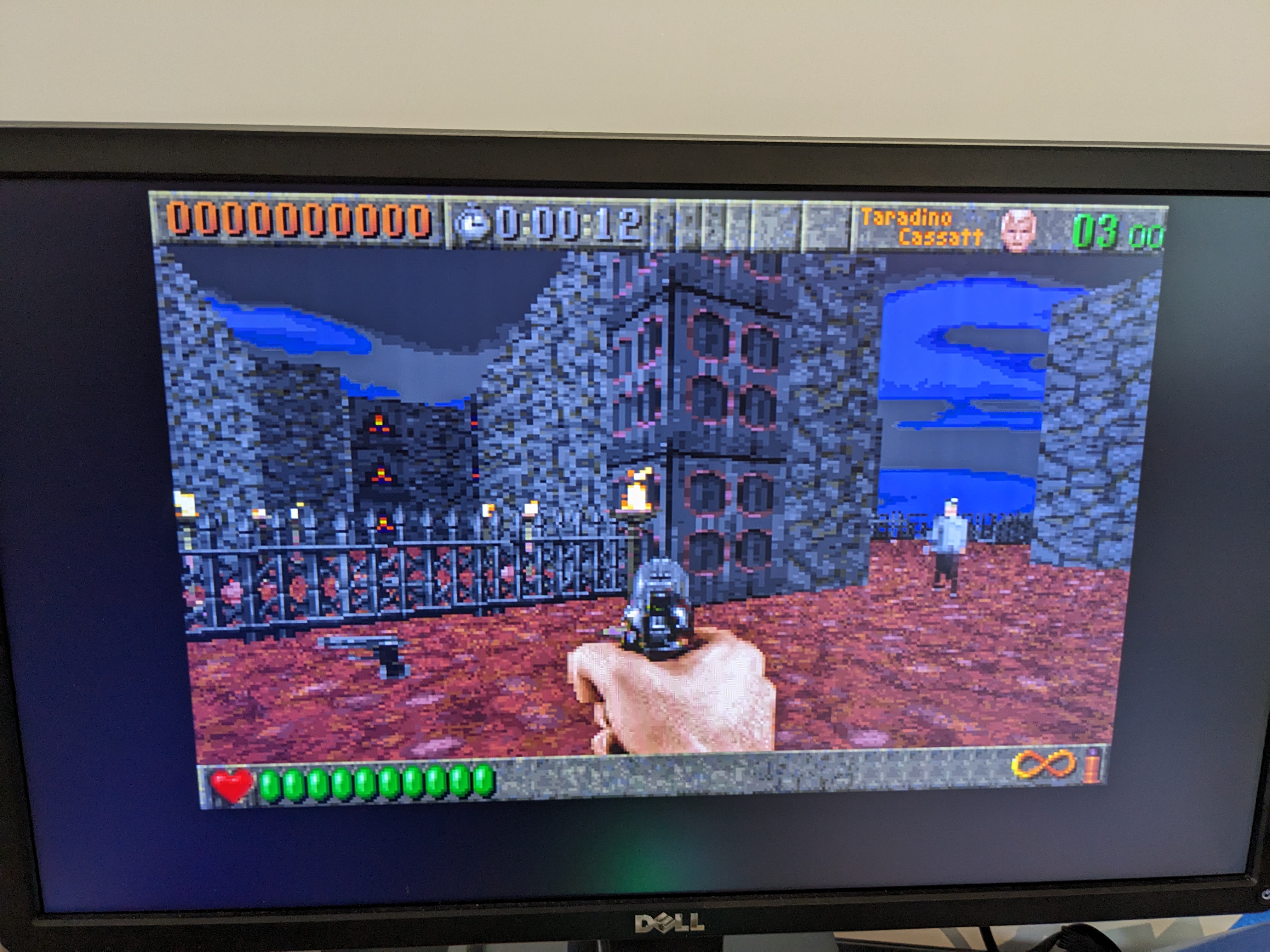
Unfortunately, I couldn’t play much right away due to the SCSI issue with the BFG9060.
The Buddha
To resolve the stability issue with the machine after the BFG9060 was installed, I needed to use a different controller for the hard drive. I decided to go for a Buddha IDE board from Individual Computers. Using FS-UAE I migrated my AmigaOS installation from the SD card images on my BlueSCSI, to raw partitions on a CF card and then installed it all into my Amiga 3000.
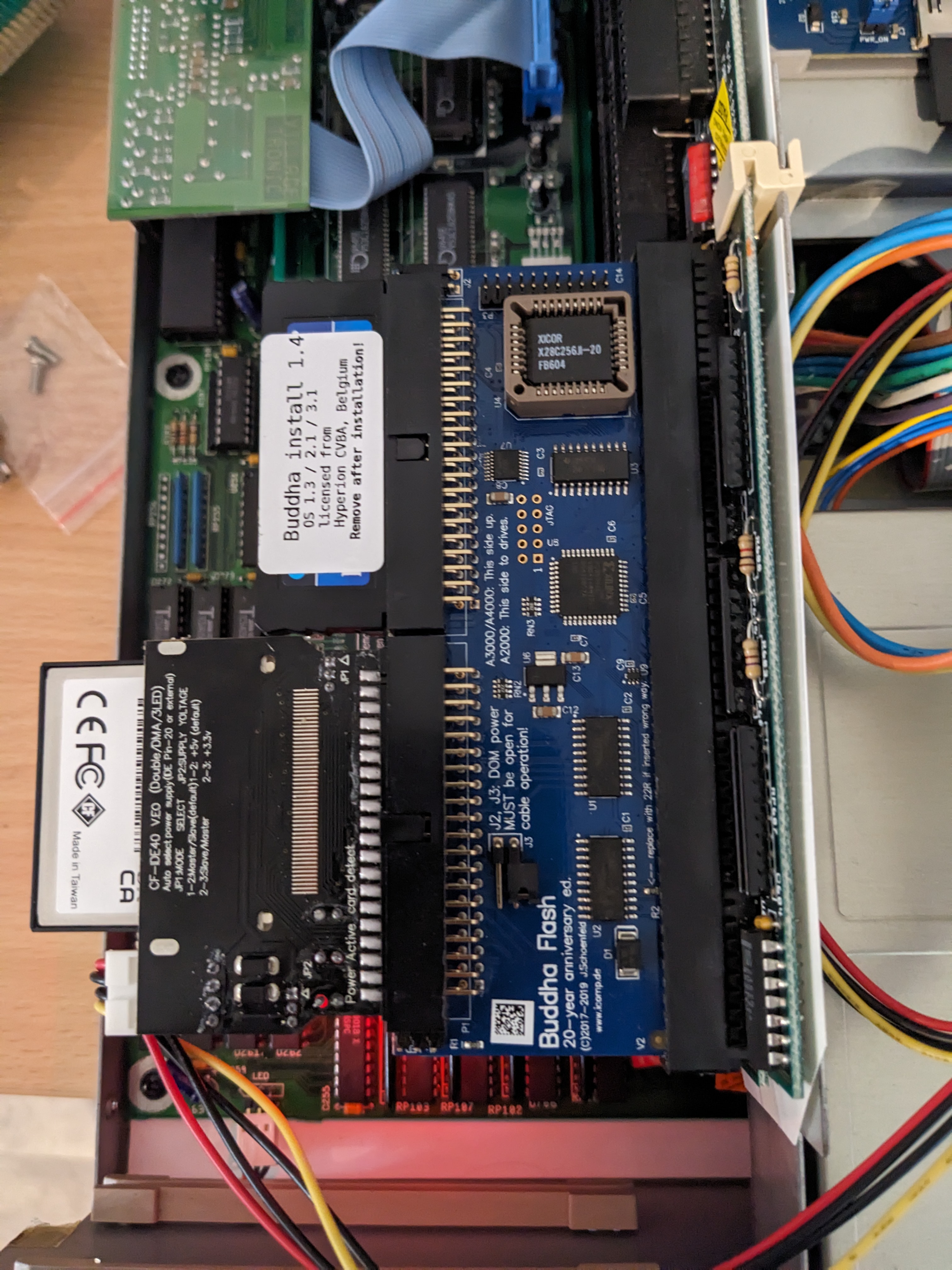
This immediately booted correctly and has been very stable playing games. As far as performance goes, I’m not noticing any different from the onboard SCSI. I tried ADoom, Rise of the Triad and even Monkey Island II in one session without any issues.

Upgrades Complete?
There is one more upgrade I want to do to this machine, and that is Ethernet. There is a lot to cover with that, and it is going to warrant a separate blog post. I’ll be writing more about this soon.
In addition, I have a heatsink and fan on the way for the 68060, this has not turned up yet, but doesn’t really need covering.
For now, this is a Which Amiga report on what my Amiga 3000 looks like.
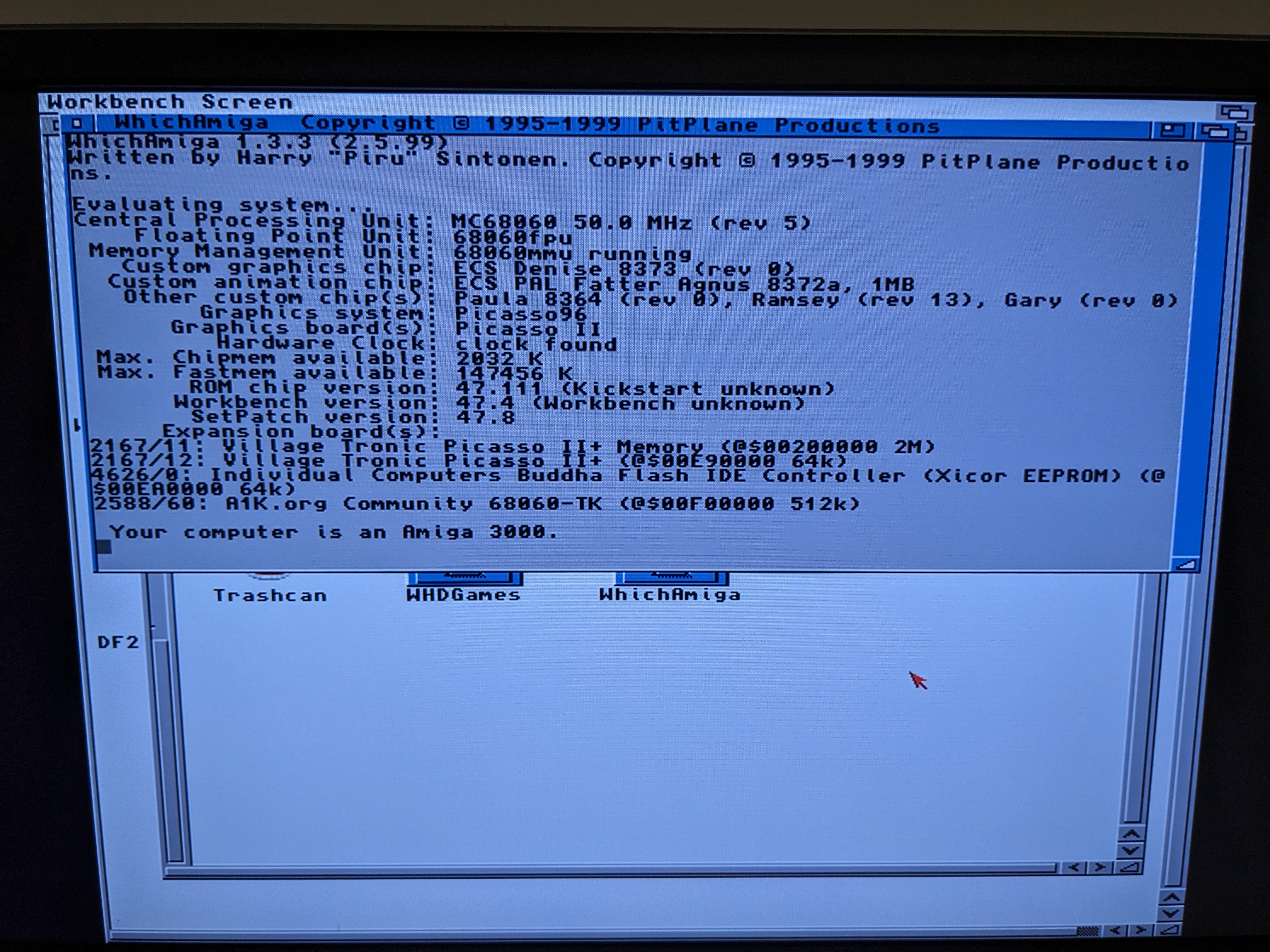


Leave a Reply